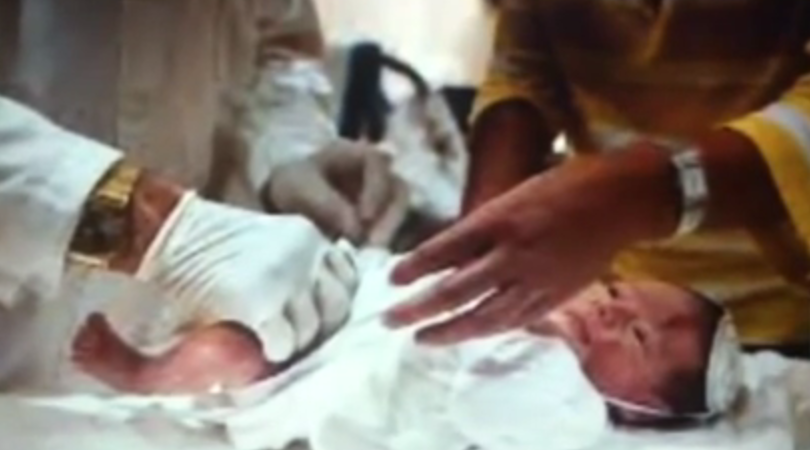New York City health officials are reporting a case of neonatal herpes contracted during a ritual Jewish circumcision. This is the first such case reported in 2017.

Image/Video Screen Shot
The infant was the full-term product of an unremarkable gestation and delivery. He was circumcised by a mohel on the 8th day of life. On day 15 of life he developed a rash on the genitals, buttocks, inner thigh, and ankle, which became vesicular by day 17 of life. Vesicular culture grew herpes simplex virus-1 (HSV-1).
The infant was admitted to hospital for a full 14 day course of intravenous acyclovir. His serum was negative for IgG antibody to herpes simplex virus types 1 and 2, and cerebrospinal fluid was HSV PCR negative. The location of the lesions, timing of signs and symptoms (following ritual Jewish circumcision and within one incubation period for HSV-1), and laboratory identification of HSV-1 are consistent with transmission during direct orogenital suction (DOS).
A 2012 Morbidity and Mortality Weekly Report (MMWR) describes the out-of-hospital, ultra-Orthodox Jewish practice, aka metzitzah b’peh, as follows: the circumciser (mohel) places his mouth directly on the newly circumcised penis and sucks blood away from the circumcision wound, also called direct orogenital suction.
Most cases of neonatal herpes are acquired during delivery, when a neonate passes through the birth canal of a woman with genital herpes infection. HSV infection after delivery is uncommon. However, in NYC, a substantial proportion of male neonatal herpes cases are related to DOS, an entirely preventable cause of infection.
Since 2000, there has been a total of 24 laboratory-confirmed cases of HSV infection following ritual Jewish circumcision reported to the Health Department. Two of the 24 infants died, and at least two others suffered brain damage.
The reported risk of an infant becoming infected with herpes simplex-1 or herpes simplex-2 who undergone direct orogenital suction is 3.4 times greater than an infant who did not go through the ritual procedure.
Related:
- New York City: 4th case of neonatal herpes due to ritual Jewish circumcision reported this year
- NYC Board of Health passes regulation to require consent from parents before performing Jewish circumcision ritual known as metzitzah b’peh
- The magnitude of risk for neonatal herpes from Jewish circumcision not well defined: Study


Sick and disgusting. The rabbi and the parents should be put in jail. Or maybe death penalty, if the baby dies.
hgg